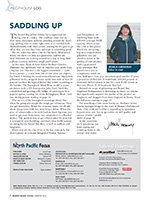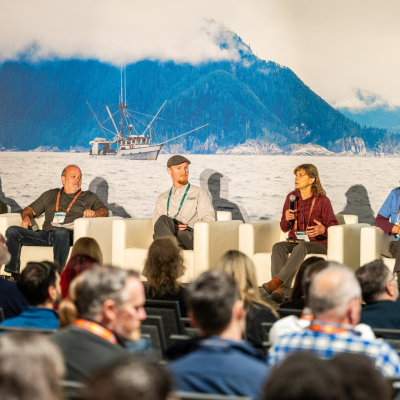The Bristol Bay gillnet fishery has a reputation for being a bit of a rodeo. The cowboys come out on their shiny aluminum stallions, parading around the river’s ring, pulling reins to make tight turns in a crowded field, churned muddy with wave action, waiting for the gun to go of so they can toss their lines and rope in something good.
But the rodeo has taken a bit of a hit lately. With prices down, the show is a little less glamorous, and the die-hard fishermen are looking around for a way to keep their stallions running until this rough patch passes.
In the winter issue of North Pacific Focus, Boats & Gear Editor Michael Crowley illustrates two significant ways to improve your profit from a big bay run. The first is the biggest investment — aside from a permit — a new boat, but it’s not what you expect. Pat Pitsch is defying the trend toward luxurious, big-power gillnetters with a stripped-down model that costs at least 25 percent less than the typical Bristol Bay netter, according to the builder. The Strongback Metal Boats model is water-jet-driven with a 425-horsepower John Deere, lined like a truck bed and sporting a fly bridge. It’s proving to be a popular option coming out of the Bellingham, Wash., yard. Get the big picture starting on page 24.
The success of the Strongback prototype shows that when the going gets tough, the tough get utilitarian. They also get innovative. When the economy tanks, we all talk about doing more with less, stretching a dollar. When the price of salmon takes a hit with back-to-back big runs, you need to get more from more, stay competitive in a flooded market. The quickest way to get a better price for your fish is to improve your handling, and that’s what RSW systems are doing for the Bristol Bay feet, as well as crabbers and longliners.
There may not be a lot of ice in the bay come July, but there’s plenty of seawater.
Integrated Marine Systems and Teknotherm are outfitting boats with $30,000 (average) RSW systems, which seems like a lot at first glance. But if you are saving big on a stripped down gillnetter, you can afford to invest in the quality of your product with a guaranteed price premium that doesn’t force you to compromise much on your hold space. Last year, processors paid another 15 cents a pound for chilled fish. It would take 200,000 pounds of delivered chilled salmon to pay for a new RSW system at that rate. That’s 15-20 boatloads. Not bad.
Beyond the scope of gillnetting and Bristol Bay, Highland Refrigeration is delivering on slurry ice systems that significantly improve the quality of the product on longliners and draggers from New England to Alaska. Read the full story starting on page 32.
For something a little more hands-on, freelance writer Emilie Springer brings us the story of Homer’s Bulletproof Nets. This niche net builder is expanding its operations beyond seine nets, but its specialties are still quality and service. Emilie’s profile starts on page 28.
In the meantime, we’re practicing our team roping and counting down to the season’s first rodeo.







